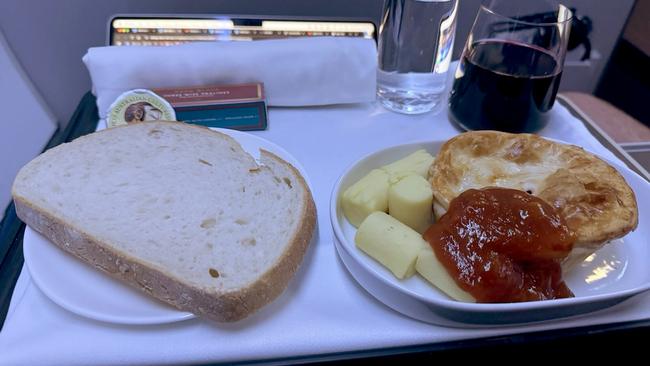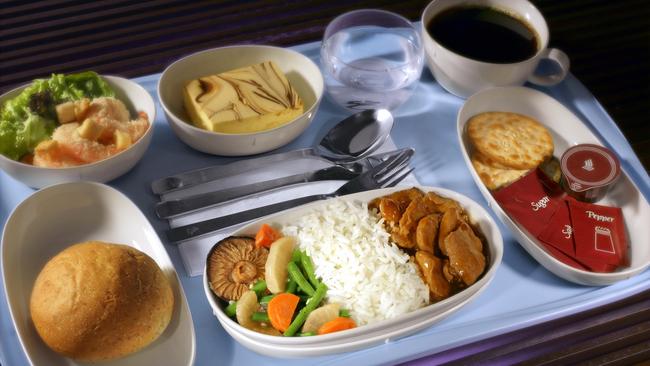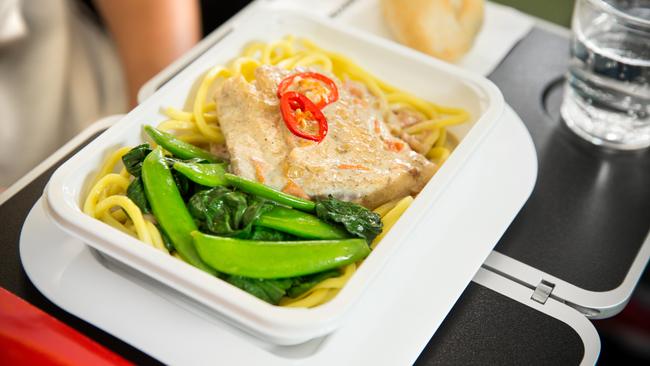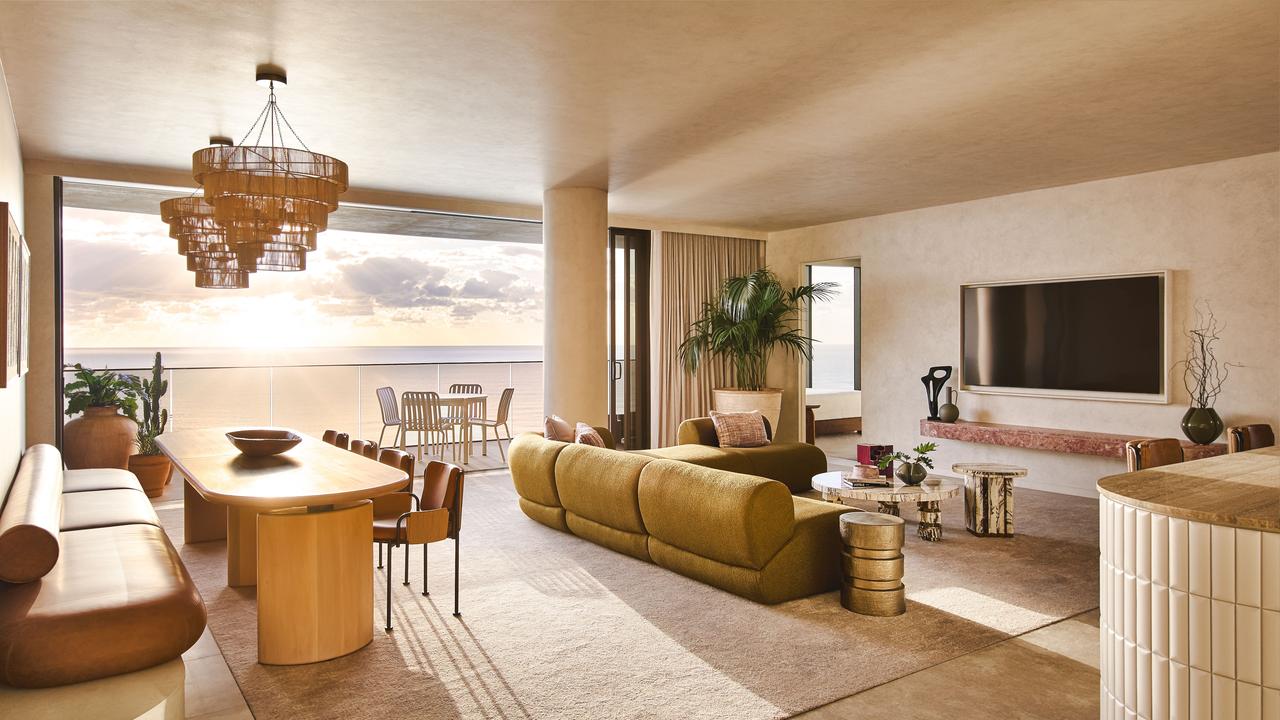The difficult challenge of delivering airline meals to please all passengers
Nothing says more about an airline’s investment in customers than the in-flight meal, with rising costs making it harder for carriers to meet passengers’ high expectations.
In-flight dining can be something of a lottery for passengers, with some meals hitting the mark and others falling well short.
The chance of a bullseye increases significantly in business and first class where airlines aim to impress customers; have a higher crew to passenger ratio; and spend more money on meals.
It’s not always the case – as the pie and sauce presented on a Qantas business class flight from Alice Springs to Darwin suggests – but the odds are certainly better than in economy.
At the back of the plane where the majority of passengers sit, the sheer number of meals calls for careful budgeting and ease of delivery, more than one option if you’re lucky, and hopefully enough to stretch to the back row.

It probably shouldn’t come as a surprise then that airlines’ budget for economy meals can be as little as $3 or $4, between $15 and $30 for business and a bit more for first class.
Qantas creative director of food, beverage and service Neil Perry says it is a challenge to deliver the experience passengers expect within the confines of a budget but they make it work.
“You don’t look at a particular dish and think ‘that’s got to meet this budget’. We look at the entire menu and say ‘OK, where is it important to spend (the money), where are the customers going to feel it, where are we getting the most bang for buck’,” he says.

He concedes economy is more difficult than the premium cabins because of the “sheer scale”, with 371 seats on a Qantas A380, as opposed to 78 in business and first class.
“Economy is such a massive volume that every 50c you spend there will affect the bottom line by millions and millions of dollars so every airline tries their best,” Perry says.
In order to stretch the budget that bit further, airlines and catering companies such as dnata make a huge effort to source in-season ingredients with broad appeal.
Side dishes such as salads, appetisers, rolls and desserts are all extra dollars, and a good indication of how much the airline is actually spending on its in-flight catering.
When budgets are cut, or simply don’t go as far due to rising costs, the in-flight meal is often the first sign of that occurring.
In Qantas’s case, economy passengers now find an ice block or Lindt ball offered as dessert, in the place of something that requires crockery and cutlery to eat.
The move not only saves money on catering but also fuel with the fewer items carried on board, the lighter the overall weight, and therefore the lower the fuel burn.
Former American Airlines chief executive Bob Crandall famously noted that removing a single olive from passengers’ meals saved the airline as much as $40,000 in fuel a year.

In almost 28 years with Qantas, Perry says not a lot has changed as far as food delivery is concerned, but what is different is passengers’ expectations. “Australians have higher expectations because of the high street restaurants and quality hotels, and they’re much more used to travelling in premium cabins,” he says.
It’s a sentiment shared by former Virgin Australia chef Luke Mangan, who was let go when the airline moved to a “value carrier” model under Bain Capital.
He says standards have certainly risen, with airlines such as Emirates and Singapore Airlines setting the pace.
“Those big airlines are doing a great job, but there are some that have taken their eye off the ball post-Covid,” Mangan says.
He declines to expand on that but says it’s reasonable for passengers to expect top quality food given the prices being paid for airfares, particularly at the pointy end of the plane.
“People are demanding, but when you’re paying $8000 for a business class seat to wherever you’re headed, high expectationsare probably justified,” he said.
“Aussies are quite savvy with their food and their wine. They know quality and want quality, and they should get it.”
It appeared each airline was tackling the cost challenge differently, with Emirates investing in its own farm last year toprovide fresh produce for inflight meals.
Located near Dubai Airport, the vertical farm has the capacity to grow more than 1 million kilograms of leafy greens a year,or 3 tonnes daily.
Air New Zealand head of culinary Justin Koen says the airline has had no choice but to increase food budgets to ensure theycontinue to offer a “unique culinary experience at 35,000 feet”.
“Over the past few years in particular, costs have increased – everything from meat and produce to labour and catering, andour budget for on-board food has had to increase with it,” Koen says.
“To navigate these challenges we regularly evaluate the aviation catering market to ensure we’re delivering the highest qualitymeals for our customers.”






To join the conversation, please log in. Don't have an account? Register
Join the conversation, you are commenting as Logout